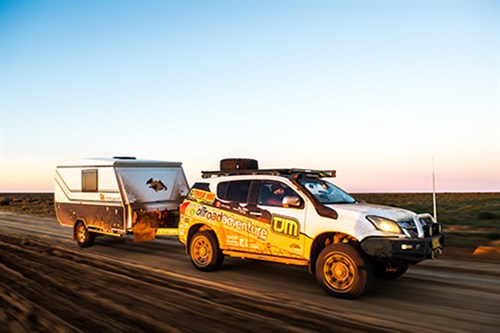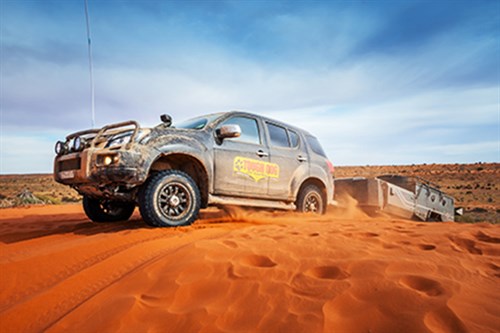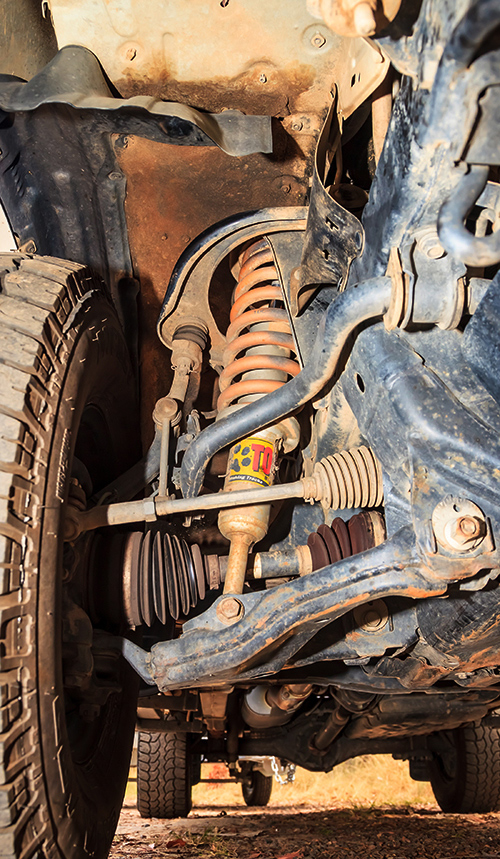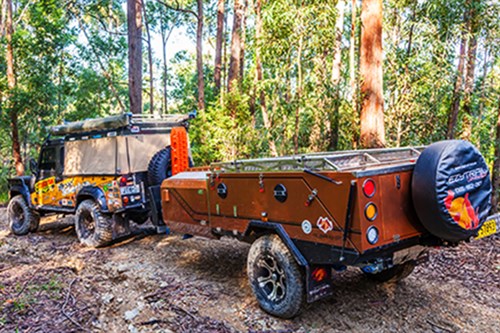While the end result is often a great motor car, there will always be a few short comings in a vehicle when we start to focus on a specific application.
Car makers create jack-of-all trade vehicles, and some of us need something a little bit more purpose driven than that. Kitting out for the perfect setup for your needs doesn’t have to be the hardest thing in the world though, especially with a little research, and some expert advice…






Let’s take a look at the right way to go about kitting out your vehicle.
IT'S ALL ABOUT WEIGHT
Suspension is all about holding up, and controlling weight. Whether you’re talking about aftermarket or OEM, the springs hold up the weight of the vehicle, and the shock absorbers control and cushion the movement of the springs as the vehicle negotiates the terrain. So it’s not too much of a stretch to understand that if the permanent weight on the vehicle is altered, say, by the inclusion of a bull bar and winch, or a drawer system, then the suspension will probably need to be modified to suit.
Of course, by that very same logic, we cannot modify the suspension to suit weight that isn’t on the vehicle, and so we come back to the golden rule of suspension modification – weight first, suspension second. If you’ve got a wish list of accessories as long as your arm to get fitted to your adventure machine, get the big ticket items fitted before you start talking suspension.
The load in the rear of your vehicle also plays a huge part when it comes to suspension selection. When we talk suspension, we talk ‘constant load’ - the load that’s in the vehicle all of the time. Things like drawer systems, fridges and rear bars all fall under this category.
This is not to be confused with occasional, or varying load. Cargo, and even ball weight from towing are all variable weights that it can be difficult to account for when setting up a vehicle.
TOWING THE LINE
The end game for a tow vehicle is to achieve a level draw bar and vehicle when the trailer is loaded and connected. The first step of course is to establish the ball weight that your trailer is exerting on the rear suspension of the vehicle.
The point of suspension is to settle when a load is applied. If the vehicle didn’t move when the load was attached, it would be so stiff that absorbing bumps would never be on the cards. A ride so stiff that the tyres can’t stay in contact with the pavement is not only going to be uncomfortable, but compromises handling and safety as well. The un-hitched vehicle should be sitting with about 15mm of “forward rake” or “nose down” attitude, so that when the load is applied to the rear, the vehicle and trailer draw bar is level.
In some cases, to achieve this, it may become necessary to slightly reduce the spring rate used in the front of the vehicle, rather than over-springing the rear of the vehicle. Most trailers should have a ball weight around 10% of their total weight, so for the most part, this only applies to the behemoth vans. If you’ve got a seriously heavy towing application, it pays to speak to a suspension specialist, who can tailor a package to your needs.
BUILD AND BUY ONLINE
Tough Dog Suspension’s website has a new feature called Build & Buy Online, which allows you to select the right suspension for your vehicle, and have it delivered to your nearest dealer for collection. You can also arrange to have the dealer fit the suspension if you prefer.
To see what complete options Tough Dog have for your vehicle, check it out at www.toughdog.com.au




